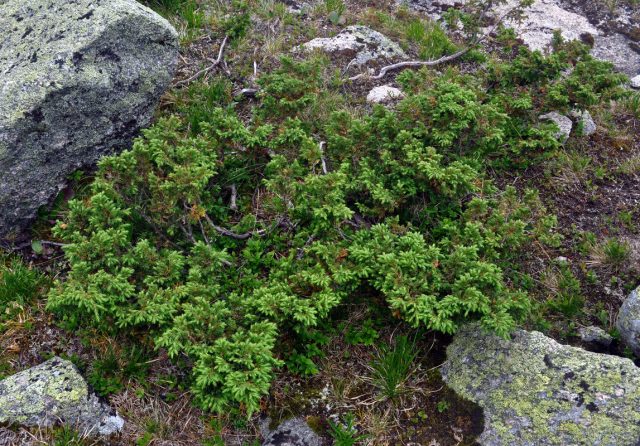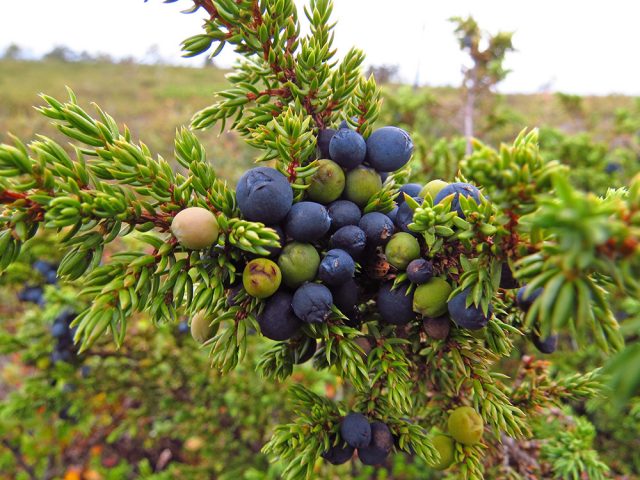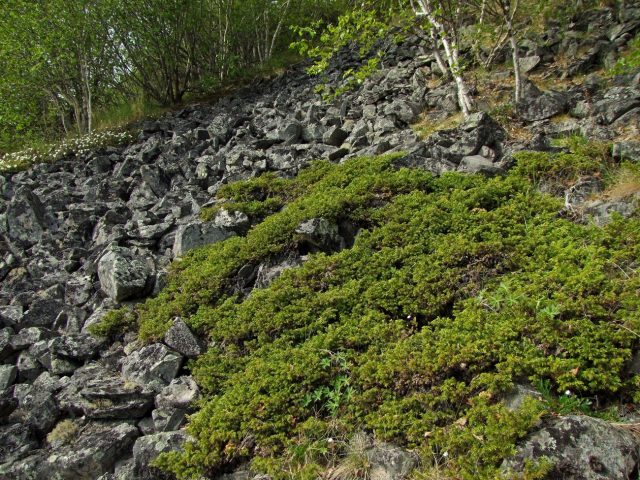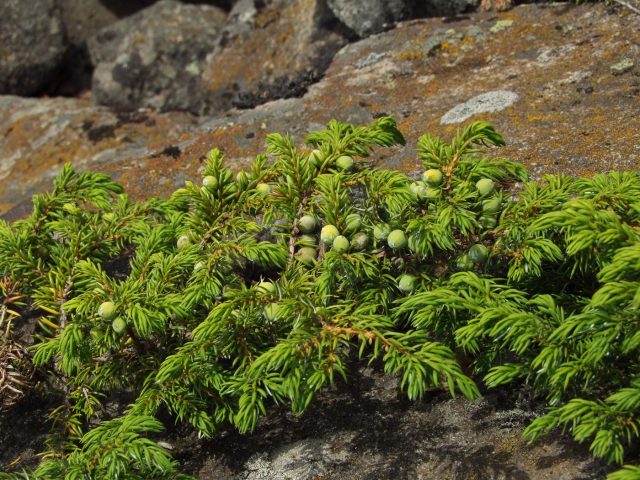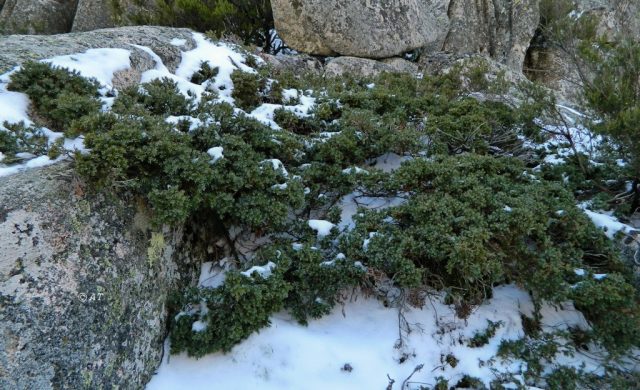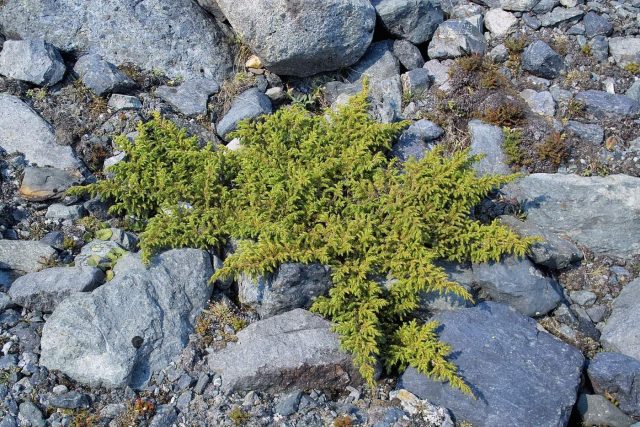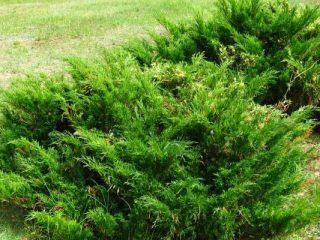Content
Juniper Siberian is rarely referenced in the reference literature. Jan Van der Neer, popular among amateur gardeners, does not have it, Krussmann, revered by experts, does not mention culture. And the thing is that botanists cannot come to a consensus on whether the Siberian juniper is a separate species.
By and large, this does not matter much for amateurs. They should take note of the information, and since crop data are scarce, provide the same care as for the Common Juniper (Juniperus Communis).
Description of Siberian juniper
Juniper Siberian in culture since 1879. In 1787 it was described by Friedrich August Ludwig von Burgsdorf, a forester from Germany.
It is a coniferous plant, the taxon of which is not fully defined. It is absolutely certain that the Siberian Juniper belongs to the Cypress family (Cupressaceae), the genus Juniperus (Juniperus). But this is a separate species of Juniperus Sibirica or a form (subspecies, variation) of the Common Juniper Juniperus communis var. Saxatilis, scientists still argue.
It is a very hardy plant, widespread, able to withstand both low and high temperatures. Moreover, the appearance of the Siberian juniper changes little depending on the habitat and climatic zone. It is considered one of the most frost-resistant conifers.
The Siberian juniper is a coniferous plant with an open, creeping crown. It rarely grows in the form of a short tree. The height of a Siberian juniper at 10 years usually does not exceed 50 cm. In an adult plant, it can reach 1 m, but only when the branches grow partially upward.
It is difficult to judge the diameter of the crown of the Siberian juniper, since the shoots lying on the ground tend to take root, and over time they cover a large area. It is difficult to control whether the branches are growing. Natural culture often lives in areas with very difficult conditions for survival. Siberian juniper can take root through agrofibre, reach the ground through mulch.
For thick triangular shoots, shortened internodes are characteristic. Usually they are located more or less in a horizontal plane, but sometimes some stick up randomly. The bark on young branches is light brown, naked, on old shoots it is grayish.
The saber-like curved needles are green, on top - with a clearly visible grayish-white stomatal stripe, does not change color in winter. The needles are pressed against the shoots, densely arranged, collected in 3 pieces, prickly, hard, from 4 to 8 mm long. Live for 2 years.
Rounded cones with a diameter of up to 8 mm, attached to short legs. Ripen 2 years after pollination in June-August. When fully ripe, the cones of the Siberian juniper become dark blue, almost black, with a bluish bloom, each containing 2-3 seeds.
In unfavorable conditions, the root can go 2 m deep. The winter hardiness of the Siberian juniper is maximum. It will grow where most other conifers will die from the cold. Lives for a long time. In Russia, botanists have found a specimen that is more than 600 years old.
Siberian juniper varieties are registered:
- Viridis;
- Glauca;
- Compacta.
The distribution area of Siberian juniper
Despite the name, the range of the Siberian Juniper is extensive. In the north, it grows in the arctic zone, in the temperate zone and regions with a warm climate - in the mountains at an altitude of up to 4200 m above sea level.
The culture can be found in Siberia, Crimea, Greenland, inner Mongolia, the Himalayas, the mountains of Central and Asia Minor, the Far East, Tibet. It grows throughout the Urals at the upper edge of the forest, and in the Caucasus - at least 2400 m above sea level. Distributed on the Kuril Islands and in the mountains of Central Europe up to Montenegro. Found in the eastern regions of North America.
In the north, the habitat of the Siberian juniper is extremely cold regions. In regions with a temperate and warm climate - high mountains, mountain slopes and placers, barren meadows. It forms clean plantings, grows in deciduous woodlands, often together with dwarf cedar and Middendorf birch.
Planting and caring for Siberian juniper
Siberian juniper has exceptional endurance, it can grow even on peaty soils, stones, rocks with minor impregnations of soil. Caring for him is simple.
When planting, do not forget that the Siberian juniper grows in breadth. You need to leave enough space for it, and so that not only the seedling, but also the adult plant that has captured a large area is fully illuminated.
Seedling and planting plot preparation
Siberian juniper is planted in an open place, it can be on a crumbling slope or poorly removed construction waste, sprinkled with earth on top. The main requirement of the plant for the soil is that it is not dense and too fertile. The case can be corrected by adding a lot of sand.
Siberian juniper will not grow on embankment soils, especially with a close standing groundwater. Exit - a thick layer of drainage, a bulk slide or terrace.
The planting hole is prepared in such a size that the drainage and an earthen lump or root can fit there. A lot of sand is added to rich, dense soils. It is very good if there is gravel or screenings on the site - they are mixed with the soil before planting.
Siberian juniper is unpretentious, but the choice of a seedling should be taken care of. First, you should not buy a plant with an open root system. You can dig a bush in the mountains, bring it home, soak the root for 12 hours, plant, and everything will be fine. But so the owners know for sure that the juniper was taken out of the ground recently, and not a week ago.
Secondly, you need to buy local plants. The Siberian juniper brought from the Crimea in the tundra will immediately die from the cold. The northern seedling will not survive the southern heat. These are, of course, extreme cases, but it is impossible to move a plant from one climatic conditions to others without long-term adaptation. And since the Siberian juniper is not such a rare culture, it is better to take it on the spot.
Landing rules
On loose, moderately fertile or poor soils, the planting pit may not be prepared at all. They just dig a pothole of a suitable size, as many novice gardeners like, lay drainage, fill in the root, and water the crop.
But, if you do everything according to the rules, the landing is done in the following sequence:
- The pit is prepared in 2 weeks. Its depth should be equal to the height of the earthen coma plus 15-20 cm for drainage. Fill it up with 2/3 soil or a prepared substrate, fill it with water.
- Immediately before planting, part of the soil is removed and set aside.
- A plant is placed in the center. The root collar should be at ground level.
- The pit is filled up, the soil is compacted.
- Watering and mulching the trunk circle.
Watering and feeding
Only a young plant is watered regularly until it takes root. As soon as it starts to grow, moisture is reduced to more than moderate.After 3-4 years of staying on the site, if the culture feels satisfactory, watering is stopped. They are made only in dry summer. At the end of the season, an abundant moisture charge is carried out.
Sprinkling the crown is helpful. They can be done once a week at sunset.
It is imperative to feed the Siberian juniper in the first 2-3 years after planting. In the spring he is given a complex fertilizer with a predominance of nitrogen, in the fall, and in the north at the end of summer - phosphorus-potassium.
In the future, if the Siberian juniper feels good on the site, up to 10 years of age, you can limit yourself to spring feeding. And then stop fertilizing altogether. But when the plant is sick and is often affected by pests, it needs to be fed twice a season.
Foliar fertilization is important for the health and decorative properties of the plant. They supply through the juniper needles those substances that are poorly absorbed by the root.
Mulching and loosening
It is only necessary to loosen the soil under the plant for the first 1-2 years after planting in order to break up the crust formed after rain or watering. Then it becomes inconvenient to do this - the branches of the Siberian juniper lie on the ground, and there is no need.
But mulching with pine bark, peat or rotted sawdust is very useful for the culture. To fill in the covering material, the branches are gently lifted.
Trimming and shaping
Sanitary pruning for Siberian juniper is required. Its branches lie on the ground; when decomposed, dead wood can become a breeding ground for diseases or a refuge for pests, which will surely move to healthy shoots.
But the plant does not need a shaping haircut. But only when the design of the garden is built in a free style. If the juniper needs to be given clear contours, or to prevent the branches from sticking out in different directions, you can cut it as you like. It is better to do this in spring or late autumn.
Preparing for winter
You need to cover the Siberian juniper only in the year of planting, preferably spruce branches. And then to clear the conscience. The culture is one of the most frost-resistant, in temperate climates and in the south there is no need even to mulch the soil for the winter.
Reproduction of the Siberian juniper Juniperus Sibirica
You can grow a Siberian juniper from seeds, cuttings, specially root the layers or separate the branches that have grown to the ground. It reproduces easily, it is on this culture that one should learn how to reproduce other, more whimsical cultures.
It is important not to let the planting dry out, protect it from trampling, loosen the soil and clean weeds.
The seeds of the Siberian juniper require long-term stratification, and it is better for amateurs not to mess with them. But cuttings can be taken all season. They take root well, after 30-45 days they put down roots. Then young plants are transplanted into an individual container or school, and the next year - to a permanent place.
Diseases and pests
Pests and diseases in the Siberian Juniper are common with the Common. It is a healthy crop, but the branches are on the ground. This is the root of most of the problems. You should pay attention to the following points:
- Rot may develop on embankment grounds, or if Siberian juniper grows next to crops that require frequent watering. Watering needs to be adjusted. And if this is not possible, lay a thick layer of processed pine bark under the branches so that an interlayer forms between the shoots and the ground. Other mulch will not be able to help.
- Dry air is the reason for the appearance of spider mites. Still, the crown of the Siberian juniper needs to be sprinkled. In hot dry summer - at least once a week.
- Sprinkling should be approached responsibly and carried out in the early morning or early evening.If the needles do not have time to dry before nightfall, there is a danger of rot, and in hot climates, even drying out.
- In the spring, after the snow melts, a specific disease can develop on the Siberian juniper - juniper shute, the spores of which survive at low temperatures.
- Mealybugs may develop in warm climates. It is difficult to fight it on junipers.
So preventive treatments cannot be neglected. Moreover, they need to be carried out especially carefully, carefully lifting the branches in order to spray from the side pressed against the ground.
Pests are destroyed with acaricides and insecticides, fungicides will help fight diseases.
Conclusion
Siberian juniper is a culture that residents of the northernmost regions can decorate with. It is easy to care for, undemanding to soil and drought resistant. The decorativeness of the culture is high, moreover, the color of the needles in winter remains green with a silvery sheen, and does not change to brown, grayish or yellowish.
